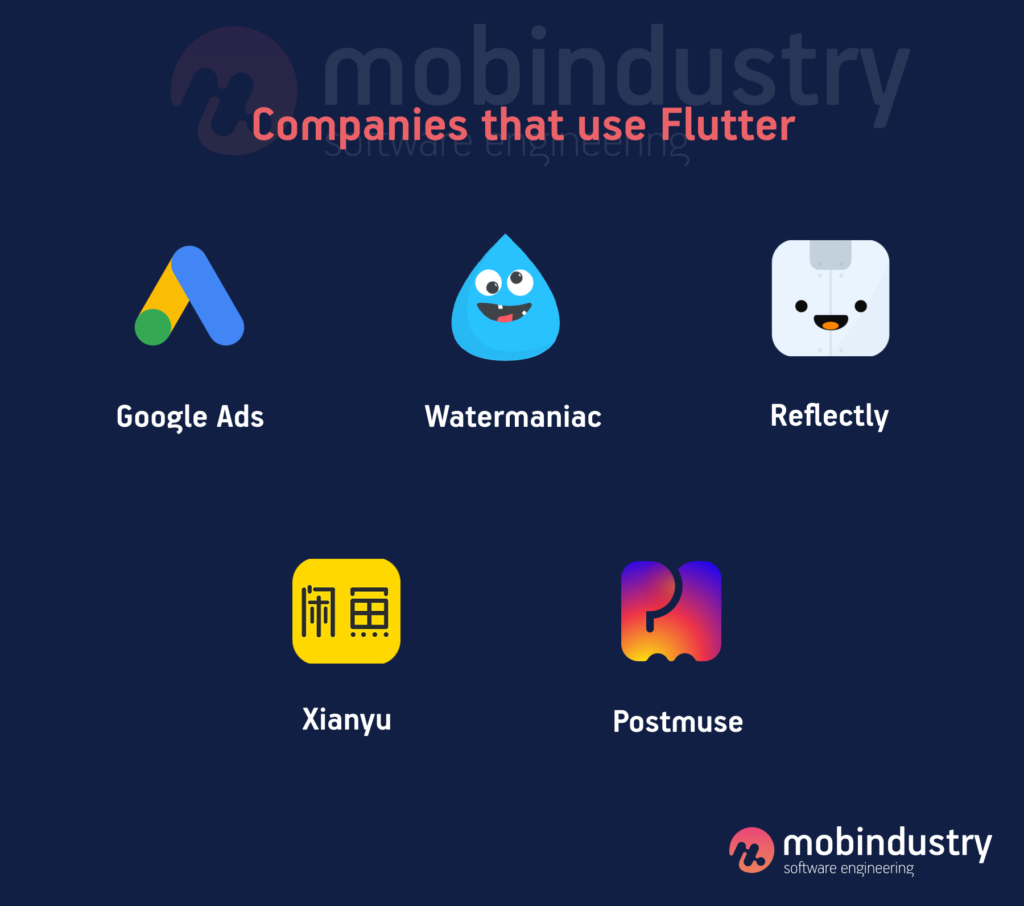How to Add Flutter to Your Existing App
In this article, we discuss why it’s a good idea to use Flutter for your project and explain how to add Flutter to your existing app.
Flutter, a powerful application development framework by Google that’s written in Dart, has made it easy for developers to create complex user interfaces. Flutter interacts effectively and easily with native device code. Meanwhile, its automated testing empowers you to achieve high application responsiveness, as it helps you identify bugs and various problems in your application. Flutter is a free and open-source development tool for mobile, desktop, and web applications.
History of Flutter
The Flutter framework appeared in 2015 as Sky, which was later renamed Flutter. It’s based on Dart, a programming language based on C and C ++. This gives developers access to platform-specific SDKs for Android and iOS, giving the entire mobile app development process and the final product a native feel.
Google announced Flutter at the 2015 Dart Developer Summit and demoed a hot reload feature — which was impressive and fresh at the time — that allows developers to make changes to their code without reloading the entire application.
Google has great plans for this new framework. It’s essentially the successor to Java and Kotlin, a new framework for Google’s next-generation operating system called Fuchsia. This is a big deal because it means the day will come when Google will stop supporting Android and focus on its new type of software for all platforms.
In 2018, Flutter exited beta testing, and developers were able to fully enjoy the experience of developing with a stable version of the framework. The community has grown a lot since then.
On March 3, 2021, Google launched Flutter 2.0 during an event called Flutter Engage. This launch was widely talked about, with many IT pros and developers referring to it as a landmark. The Flutter 2.0 release contains features and fixes that are unusual in their own way.
Why choose Flutter development?

Flutter is a cross-platform framework that allows developers to create beautiful apps for both Android and iOS. Flutter can also be used for desktop and server-side development, so you can create an app with a single common code base that runs seamlessly on Android, iOS, Windows, macOS, Linux, and other systems.
Companies are currently using Flutter to build Android and iOS apps. Flutter allows them to save money because they only need to build the app once and it will work on both platforms while maintaining a native look and feel.
This is not the case, for example, with most other cross-platform frameworks like React Native.
All these factors make Flutter the most attractive mobile app development platform in 2022. To summarize, there are three main advantages of Flutter:
- Fast development
- Cost-effective
- Amazing performance
Flutter uses widgets that developers can reuse in the application, and this significantly speeds up development compared to other cross-platform technologies such as React Native. In terms of performance, Flutter is close to native languages such as Kotlin and Swift. Since Flutter as we know it today only appeared in 2018, however, there are still few developers with experience in this technology.
Flutter has several advantages. It’s a performance-oriented mobile app development environment written in Dart, making it incredibly fast and efficient, and making it easy for developers to interact with native device components. Additionally, Flutter is backed by Google, which means that thousands of developers around the world can help with the development process in addition to Google’s own support team.
The widgets that Flutter uses allow code to be reused across platforms, so it’s incredibly compatible. And it’s all easy to customize. Thus, there are a number of advantages to using Flutter. But perhaps you are worried that integrating a new language and a new development environment into an existing project will cause problems?
Whether you’re using iOS or Android, you don’t need to rewrite your entire application to put it in Flutter. Flutter is easy to integrate into an existing application as a library or module. You can import this module into your iOS or Android app so one part of your UI is in Flutter and the rest remains in your existing codebase.
Companies that use Flutter

Flutter has already been used to develop hundreds of applications including:
- Google Ads (marketing)
- Xianyu (ecommerce)
- Reflectly (personal management)
- Watermaniac (healthcare and wellness)
- PostMuse (social media)
These applications belong to completely different domains and are of different sizes. Hundreds of companies use Flutter for their core projects.
Based on our experience at Mobindustry, we can say that more than half of our new clients choose Flutter app development as their main strategy because it’s more cost-effective and it’s becoming easier to find Flutter developers. The cost of developing a Flutter app is lower than the cost of developing a native app, which is also a significant advantage of this technology.
If you have your own development team and don’t plan on hiring Flutter app developers, it won’t take your existing developers long to learn this new framework. This means you don’t have to worry about finding Flutter mobile development specialists if you decide to expand your team.
Add Flutter to an existing app
Sometimes, it’s not practical to rewrite an entire application in Flutter all at once. In such situations, Flutter can be integrated into an existing application piece by piece, as a library or module. A module can then be imported into your Android or iOS app to render a portion of your app’s UI in Flutter. Or you can just run the usual Dart logic.
In a few steps, you can add the productivity and expressiveness of Flutter to your existing application. Starting with Flutter v1.12, adding to an app is supported for the baseline integration scenario of one full-screen Flutter instance per app. Flutter currently has the following limitations:
- Packaging multiple Flutter libraries into an application is not supported.
- Plugins used in add-to-app on Android should migrate to the new Android plugin APIs based on FlutterPlugin.
- Plugins that do not support FlutterPlugin can exhibit unexpected behavior if they make assumptions that are not valid in the application add-in (for example, assuming that Flutter activity is always present).
- Since version 1.17, the Flutter module only supports AndroidX apps on Android.
Starting with Flutter v1.26, Add to Application experimentally supports adding multiple instances of Flutter engines, screens, or views to your application. This can help in integration scenarios such as a hybrid navigation stack with mixed inline and Flutter screens or Flutter partial multi-screen. Having multiple Flutter instances allows each instance to maintain an independent application and UI state while using minimal memory resources.
Add Flutter to Android applications
- Build and import the Flutter module automatically by adding the Flutter SDK hook to your Gradle script.
- Paste the Flutter module into the Android Archive (AAR) for integration into your own build system and for better Jetifier compatibility with AndroidX.
- Choose the FlutterEngine API for starting and persisting your Flutter environment independently of attaching a FlutterActivity/FlutterFragment.
- Android Studio Android / Flutter co-editing and module creation / import wizard.
- Java and Kotlin host applications are supported.
- Flutter modules can use Flutter plugins to interact with the platform. Android plugins should be moved to Plugin API V2 to be correctly added to the application. Since Flutter v1.12, most plugins supported by the Flutter team have been ported in the same way as FlutterFire.
- Supports Flutter debugging and stateful hot reloading using a Flutter connection from the IDE or command line to connect to an app containing Flutter.
Flutter can be integrated into existing Android apps.
- You can embed a Flutter module directly into an Android or AAR archive to fit your own build system.
- A module creation / import wizard enables co-editing of Android Studio between Android and Flutter.
- Supports both Java and Kotlin applications.
- You can integrate Flutter plugins into an existing platform, making it easy to integrate Flutter modules.
- When you add the Flutter SDK interceptor to your Gradle script, it automatically creates and, importantly, any Flutter module you create.
- FlutterEngine helps you build and extend the Flutter framework so you can easily attach other Flutter widgets and modules.
- After integrating Flutter, you can use Flutter Attach from the IDE to connect to your application.
Add Flutter to iOS applications
- Automatically build and import a Flutter module by adding the Flutter SDK interceptor during the build step in CocoaPods and Xcode.
- Embed the Flutter module into the common iOS framework for integration into your own build system.
- Choose FlutterEngine API for starting and saving the Flutter environment regardless of FlutterViewController connection.
- Both Objective-C and Swift host applications are supported.
- Flutter modules can use Flutter plugins to interact with the platform.
- Supports Flutter debugging and stateful hot reloading using a Flutter connection from the IDE or command line to connect to an app containing Flutter.
Flutter’s compatibility with iOS and Android makes it attractive to developers.
Flutter modules can be integrated into iOS in the same way as in Android:
- Flutter supports both Objective-C and Swift host applications.
- Flutter can easily be integrated into the build system and use the iOS framework.
- FlutterEngine helps you build and extend the Flutter framework so you can easily attach other Flutter widgets and modules.
- Flutter plugins can integrate and fit into an existing platform, and Flutter modules can be easily integrated as a result.
- After integrating Flutter, you can also use Flutter Attach from the IDE to connect to your application.
- You can easily add the Flutter SDK hook to CocoaPods and Xcode when you automatically create and import a Flutter module.
Final thoughts
As Flutter continues to evolve, we can do more and more things with it. But it’s still unreasonable to say that Flutter can be used for any application development project.
When it comes to mobile apps, however, it’s unlikely you will come across anything Flutter is not good at because mobile app development has been supported and improved from the beginning. Most things you’ll ever need are already there.
Flutter is a fantastic platform for developing cross-platform applications. Its Dart language is compatible with both iOS and Android. You might think you need to start completely from scratch if you want to include Flutter in your application infrastructure, but you would be wrong. You can integrate individual Flutter modules into your existing iOS or Android app without removing or modifying your existing codebase, allowing you to take your app to the next level and into the future.
If you’re interested in adding Flutter to your existing project but don’t know where to start, contact Mobindustry for a free consultation.


